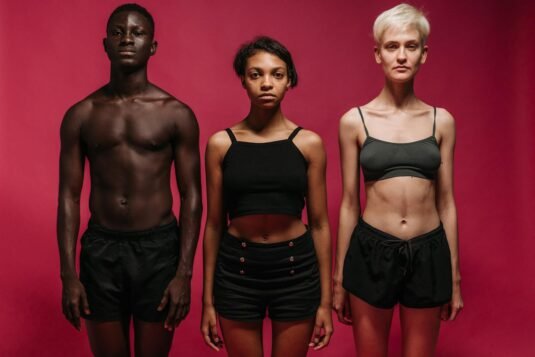Health and Wellness Trends | 2026 | Smart | Wellness | Emotional Health |
The global wellness landscape is evolving rapidly as we approach 2026. Emerging technologies, holistic health practices, and environmental consciousness are transforming the way we live, eat, sleep, and exercise. Smart wellness 2026 and emotional resilience are becoming critical pillars of a healthy lifestyle, while sustainable and personalized approaches are setting new standards for long-term well-being.
According to the Global Wellness Institute (2025), the wellness economy is projected to exceed $8 trillion by 2027. This growth is fueled by digital health solutions, AI-powered devices, and growing awareness of mental and emotional health. In this blog, we explore 10 transformative health and wellness trends 2026 that are shaping the future.
1. Smart Wellness Devices: Personalized Health at Your Fingertips
Wearable technology is no longer limited to fitness tracking. In 2026, smart wellness devices include AI-powered wearables that monitor heart rate variability, stress levels, sleep quality, hormonal balance, and even emotional states. Devices such as smart rings, biosensing patches, and neural-feedback headbands provide real-time data and actionable insights.
Companies like WHOOP, Oura, and Fitbit have integrated AI coaching to suggest lifestyle adjustments for optimal wellness. By 2026, 65% of wellness-conscious individuals are expected to use these devices daily, making personalized, data-driven health management mainstream.
2. Emotional Resilience: The Core of Mental Fitness
Emotional health is becoming as important as physical health. Emotional resilience 2026 programs are being integrated into schools, workplaces, and online communities. These programs emphasize self-regulation, empathy, stress management, and mindfulness practices.
Virtual therapy, AI-guided meditation apps, and digital mental wellness platforms are making support accessible 24/7. Studies from the World Health Organization suggest that improving emotional resilience can reduce workplace burnout by up to 35% and enhance overall life satisfaction.
3. Personalized Wellness Ecosystems: Tailored Health Plans
By 2026, personalized wellness 2026 is the norm. Advanced AI platforms and genetic testing allow individuals to receive nutrition, fitness, and mental health plans based on DNA, microbiome, and lifestyle patterns.
- AI Nutritionists: Tools analyze genetic data and suggest personalized meal plans to optimize immunity, energy, and longevity.
- Digital Health Twins: Virtual simulations help predict responses to diet, exercise, and medication, allowing proactive adjustments.
- Behavioral Tracking: Apps monitor daily activity, sleep, and stress to create adaptive wellness routines.
- Example: Apple Health 360 and WHOOP Coach AI integrate multiple data streams to optimize daily wellness interventions.
4. Sustainable and Eco-Friendly Health Habits
Sustainable lifestyle 2026 is gaining importance as people realize that personal health and planetary health are interconnected. Eco-conscious choices now dominate the wellness sector.
- Plant-Based Nutrition: Growing adoption of plant-based diets reduces carbon footprint and supports cardiovascular health.
- Low-Impact Fitness: Gyms promoting outdoor activities, low-energy machines, and community yoga support eco-friendly fitness.
- Biodegradable Products: Supplements, skincare, and fitness gear are being designed with minimal environmental impact.
- Eco-Wellness Tourism: Retreats in natural habitats focus on both mental rejuvenation and ecological conservation.
5. Digital Mindfulness and Holistic Healing
The fusion of tradition and technology defines holistic healing 2026. Mindfulness, meditation, and breathwork now integrate with AI and VR for measurable outcomes.
- VR Meditation: Immersive environments enhance focus and reduce stress in 15–20 minutes sessions.
- AI Breathing Coaches: Analyze respiration patterns and suggest exercises to lower anxiety and improve oxygenation.
- Holistic Platforms: Combine Ayurveda, yoga, and neuroscience to create comprehensive mind-body programs.
- Real-World Example: Calm Collective VR and MindAI platforms lead the market in digital mindfulness solutions.
6. Preventive Healthcare and Predictive AI
Preventive healthcare 2026 leverages AI to predict diseases before symptoms arise. Hospitals, clinics, and wellness centers adopt predictive analytics to reduce chronic illness burden.
- Genomic Analysis: Detect predispositions to conditions like diabetes, heart disease, or mental health disorders.
- Digital Twin Modeling: Virtual patient simulations guide treatment and preventive strategies.
- Predictive Diagnostics: Continuous monitoring of blood biomarkers, sleep, and activity levels allows early intervention.
- Impact: Could reduce healthcare costs by up to 40% and improve patient outcomes significantly by 2030.
7. Sleep Science and Circadian Wellness
Sleep optimization is critical for longevity and performance. Sleep wellness 2026 integrates technology and biology to enhance rest quality.

- Smart Pillows & Beds: Adjust firmness and temperature based on sleep cycle stages.
- Circadian Lighting: Indoor lighting adjusts automatically to support natural melatonin release.
- Wearable Sleep Sensors: Track REM, deep sleep, and interruptions, providing actionable insights.
- Statistics: Studies show improved sleep can boost productivity by 25% and mental clarity by 30%.
8. Everyday Biohacking for Productivity
Biohacking has entered mainstream life. Biohacking 2026 includes safe, science-backed interventions for enhanced energy, focus, and recovery.
- Red-Light Therapy: Improves skin, muscle recovery, and cognitive performance.
- Nootropic Supplements: Enhance memory, concentration, and learning ability.
- Cold Exposure & Sauna Therapy: Boost circulation, reduce inflammation, and improve stress tolerance.
- Statistics: Over 20% of urban professionals now practice at least one biohacking routine daily.
9. Community-Driven Wellness Networks
Community wellness 2026 emphasizes social accountability, shared motivation, and peer support to maintain healthy habits.
- Fitness Challenges: Apps and local communities create group challenges for motivation and engagement.
- Peer Support Networks: Mental health platforms encourage discussions, coping strategies, and resilience building.
- Social Wellness Tracking: Platforms like Strava Mind or Calm Collective allow tracking and social encouragement.
- Impact: Community involvement increases adherence to wellness programs by 35–40%.
10. Mindful Longevity and Future Health
The ultimate goal of wellness 2026 is a longer, healthier, and more fulfilling life. Mindful longevity combines emotional health, physical fitness, and purpose-driven living.
- Regenerative Nutrition: Focus on anti-aging foods and supplements backed by scientific research.
- Mind-Body Coherence: Practices like meditation, yoga, and tai chi enhance mental clarity and physiological balance.
- Longevity Tech: Devices monitor vitals and biochemical markers to optimize life quality.
- Future Outlook: By 2035, wellness will be an integrated ecosystem where technology, community, and sustainability converge.
📊 Future Wellness Growth Chart (2026 – 2035)
2026
Smart Wellness Devices: 40%
Mental Health Awareness: 45%
Holistic Healing Adoption: 30%
Eco-Wellness Lifestyle: 35%
2027
Smart Wellness Devices: 55%
Mental Health Awareness: 50%
Holistic Healing Adoption: 40%
Eco-Wellness Lifestyle: 48%
2028
Smart Wellness Devices: 68%
Mental Health Awareness: 60%
Holistic Healing Adoption: 55%
Eco-Wellness Lifestyle: 58%
2029
Smart Wellness Devices: 75%
Mental Health Awareness: 70%
Holistic Healing Adoption: 66%
Eco-Wellness Lifestyle: 67%
2030
Smart Wellness Devices: 81%
Mental Health Awareness: 78%
Holistic Healing Adoption: 74%
Eco-Wellness Lifestyle: 75%
2031
Smart Wellness Devices: 88%
Mental Health Awareness: 84%
Holistic Healing Adoption: 80%
Eco-Wellness Lifestyle: 83%
2032
Smart Wellness Devices: 93%
Mental Health Awareness: 88%
Holistic Healing Adoption: 86%
Eco-Wellness Lifestyle: 90%
2033
Smart Wellness Devices: 96%
Mental Health Awareness: 91%
Holistic Healing Adoption: 91%
Eco-Wellness Lifestyle: 94%
2034
Smart Wellness Devices: 98%
Mental Health Awareness: 95%
Holistic Healing Adoption: 94%
Eco-Wellness Lifestyle: 96%
2035
Smart Wellness Devices: 100%
Mental Health Awareness: 99%
Holistic Healing Adoption: 97%
Eco-Wellness Lifestyle: 99%
❓ Frequently Asked Questions (FAQ)
1. What are the key health trends 2026?
Major trends include smart wellness devices, emotional resilience programs, personalized nutrition, sustainable living, digital mindfulness, and preventive healthcare strategies.
2. How will AI impact wellness in 2026?
AI will optimize personalized health plans, predict disease risks, monitor emotional well-being, and provide real-time insights for preventive care and lifestyle management.
3. Why is emotional resilience important for wellness?
Emotional resilience improves stress management, mental clarity, workplace productivity, and overall quality of life, making it a vital aspect of holistic health.
4. How does sustainable living affect personal health?
Sustainable habits, such as eco-friendly nutrition and low-impact fitness routines, reduce environmental stress and contribute to both personal and planetary well-being.
5. What does the future of wellness look like by 2035?
By 2035, technology, mindfulness, community-driven wellness, and sustainability will merge, creating an integrated ecosystem that enhances longevity and overall quality of life.

Conclusion: Embracing the Future of Health & Wellness
As 2026 unfolds, it is clear that health and wellness are no longer just personal choices—they are integrated into our daily routines, communities, and technological ecosystems. By adopting smart wellness devices, nurturing emotional resilience, and embracing sustainable and personalized wellness practices, individuals can ensure long-term physical, mental, and emotional well-being.
The fusion of AI, biohacking, digital mindfulness, and community-driven initiatives is shaping a future where health is proactive, data-informed, and deeply personalized. Mindful longevity emphasizes not just longer life, but a healthier, more fulfilling, and purpose-driven existence.
2026 promises a transformative era for wellness—a time when innovation, mindfulness, and sustainability converge to create a holistic blueprint for the future of health.
Disclaimer:
The chart and health numbers are estimates for informational purposes only and do not constitute medical advice. Consult a healthcare professional for personalized guidance.
Last Updated on 1 week by Ravikant Janrao




Hi, how have you been lately?
Pingback: The Power Of Love (2025) - LOVE AND HEALTH FUTURE
Pingback: Love And Health In The New American Reality (2025–2030): Cautious Spending, AI, Green Living & Lifestyle Shifts - LOVE AND HEALTH FUTURE